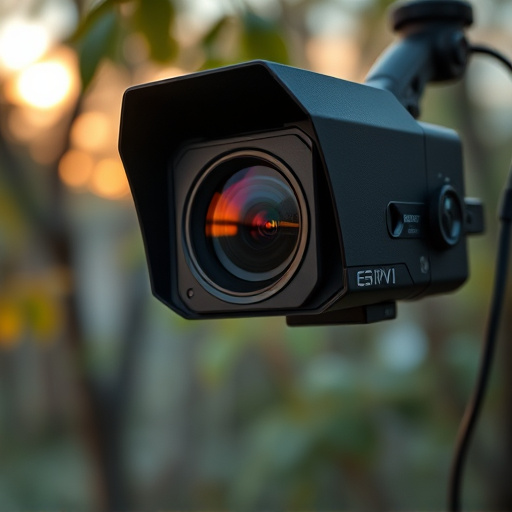Advanced battery-powered wireless spy cameras integrate seamlessly into environments as everyday objects, transmitting video via Wi-Fi to smartphones or computers. Detection methods include specialized signal detectors, tracking algorithms, radar systems, and infrared sensors, which pinpoint locations without damage. Legal considerations are crucial due to varying privacy laws, with consultation recommended for strict compliance when using such devices.
Hidden recording device signal scanning has become an essential skill in today’s digital age, especially with the prevalence of battery-powered wireless spy cameras. This comprehensive guide explores advanced techniques for detecting and tracking these clandestine devices. From understanding their operation to employing non-invasive scanning methods and leveraging cutting-edge tools, we’ll equip you with the knowledge to navigate this intricate landscape. Additionally, we’ll delve into legal considerations, ensuring a responsible approach to signal scanning.
- Understanding Wireless Spy Camera Operation
- Techniques for Signal Detection and Tracking
- Non-Invasive Scanning Methods
- Advanced Tools for Hidden Device Discovery
- Legal Considerations in Signal Scanning
Understanding Wireless Spy Camera Operation
Battery-powered wireless spy cameras operate on a simple yet sophisticated principle. These devices are designed to remain hidden, often mimicking everyday objects like plants or light bulbs, and capture video footage remotely via a Wi-Fi connection. Understanding their operation involves grasping how they transmit signals and maintain power.
The signal scanning process begins with the camera’s ability to detect and connect to a compatible network. Once connected, it streams video data directly to a linked device—such as a smartphone or computer—allowing users to monitor activity in real-time. This wireless transmission is facilitated by built-in antennas and encryption protocols designed to protect privacy. Battery-powered models are equipped with low-power consumption features, ensuring they can operate discreetly for extended periods without detection.
Techniques for Signal Detection and Tracking
In the realm of hidden recording device signal scanning, advanced techniques are employed to detect and track signals emitted by battery-powered wireless spy cameras. One such method involves the use of specialized signal detectors capable of picking up on subtle electromagnetic signatures that these devices produce. These tools can identify not only the presence but also the location of the camera, making them invaluable for security professionals and privacy advocates alike.
Additionally, tracking algorithms have been developed to monitor the continuous movement of these wireless spy cameras. By analyzing signal strength variations over time, these algorithms can predict camera trajectories, helping investigators anticipate their potential targets or hiding places. This proactive approach enhances the effectiveness of signal scanning processes, especially in dynamic environments where covert surveillance is a concern.
Non-Invasive Scanning Methods
Non-invasive scanning methods for hidden recording devices, such as battery-powered wireless spy cameras, have become increasingly important in ensuring privacy and security. These advanced technologies allow for the detection and identification of covert surveillance equipment without causing any physical damage or disruption to the environment. One popular technique is the use of specialized radar systems that can penetrate walls and other obstacles to locate hidden cameras. This method is particularly useful in homes, offices, and public spaces where traditional searching methods might be impractical or invasive.
Another less intrusive approach involves the deployment of infrared (IR) sensors and thermal imaging cameras. These tools can detect heat signatures emitted by electronic devices, making them effective at identifying active spy cameras hidden behind walls or within objects. This non-invasive scanning process is widely employed in security checks at events, conferences, and sensitive facilities to prevent unauthorized surveillance. By leveraging these innovative techniques, professionals can now proactively safeguard personal and private spaces from covert recording devices, enhancing overall security measures.
Advanced Tools for Hidden Device Discovery
In today’s digital era, advanced tools have emerged to detect hidden recording devices, particularly battery-powered wireless spy cameras. These innovative solutions employ sophisticated signal scanning methods to uncover covert surveillance equipment. By analyzing radio frequency (RF) signals and infrared emissions, specialized devices can pinpoint the location of hidden cameras and other similar gadgets.
One of the most effective techniques involves using RF detectors that can identify the unique signals emitted by wireless spy cams. Additionally, thermal imaging cameras are invaluable tools for detecting heat signatures produced by active devices, even if they’re not transmitting any signal. These cutting-edge methods empower users to navigate and protect their personal spaces from intrusive hidden recording devices.
Legal Considerations in Signal Scanning
When employing signal scanning methods for hidden recording devices, such as battery-powered wireless spy cameras, it’s paramount to navigate legal considerations carefully. The use of such devices is subject to strict regulations and laws designed to protect privacy rights. Different jurisdictions have varying rules regarding surveillance, with some permitting limited use for legitimate purposes like security while others strictly prohibit any form of hidden recording without explicit consent.
Using battery-powered wireless spy cameras or similar devices for unlawful surveillance can result in severe legal consequences, including fines and imprisonment. It’s crucial to understand and respect privacy laws before employing any signal scanning techniques. This involves seeking legal counsel for guidance on what is permitted under the current legislation and ensuring that any use of hidden recording devices adheres strictly to these guidelines.
Hidden recording device signal scanning has evolved from simple manual searches to advanced, non-invasive techniques. By understanding how battery-powered wireless spy cameras operate and employing modern detection tools, professionals can now accurately identify and locate these devices more effectively. While legal considerations must be navigated carefully, the ability to detect hidden cameras ensures a safer and more secure environment for individuals and organizations alike.
